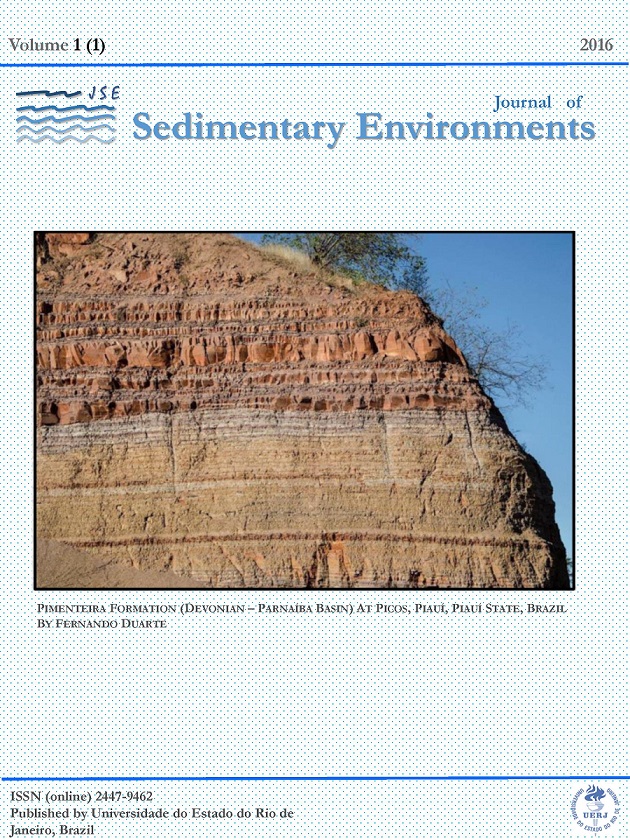RARE EARTH ELEMENTS USED AS FINGERPRINTS OF DIFFERENTIATED SEDIMENT SOURCES IN THE RIA DE AVEIRO (PORTUGAL)
DOI:
https://doi.org/10.12957/jse.2016.21444Palavras-chave:
Rare Earth Elements, Total concentrations, Sequential chemical extraction, Sedimentary dynamics, Coastal lagoonResumo
This work focuses on the distribution and the controlling factors of rare earth element (REE) total concentrations and fractionation patterns in fine sediment fractions of 53 samples collected along the main channels of the Ria de Aveiro, a northern Portuguese coastal lagoon. Total and available concentrations and residual phases of REE and total concentrations in three chemically partitioned fractions (S1 - adsorbed by clay and co-precipitated with carbonates; S2 - adsorbed by organic matter; S3 - adsorbed by amorphous Mn hydroxides) are analysed. These data are joinly analysed with physicochemical, textural and mineralogical and other geochemical data. Sediment samples mainly consisted of phyllosilicates, quartz, plagioclase and K–feldspars. Cerium (Ce) is the most abundant REE in the residual phase and displays the lowest total available percentage, whereas Yttrium (Y) is the most available. The highest total concentration and residual concentration (R) of Ce, Lanthanum (La), Scandium (Sc) and Y are mostly related to fine grained sediments, suggesting that their distributions are conditioned by lagoon hydrodynamics. The dissimilar distribution of REE-S1, REE-S2 and REES3 indicates differentiated sedimentary processes. The enrichment of REE-S2 and REE-S3 is related essentially to biogeochemical processes inside the lagoon. The REE-S1, as well as Ce-S1/Sc-R, trace sediments supplied from the northern areas suplyed mostly by the Douro River outflow and from the Antuã River. In the past, the sediments suplyed by the Douro River through the litoral drift contributed to the formation of the lagoon islands. Thus the relatatively high Ce-S1/Sc-R values inside the lagoon allowed the identification of: sediments supplied from the litoral drift and deposited near the lagoon mouth, erosional processes of the lagoonal islands and sediments supplied by the Antuã River. This work demonstrates that the available concentrations of rare earth elements can be considered as important tools for investigating sediment sources and dispersion in a coastal system.
doi: 10.12957/jse.2016.21444
Downloads
Publicado
Edição
Seção
Licença

Journal of Sedimentary Environments (JSE) is licensed under a Creative Commons Attribution-Noncommercial-Share Alike 4.0 International License.

